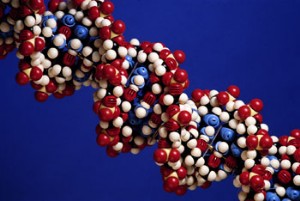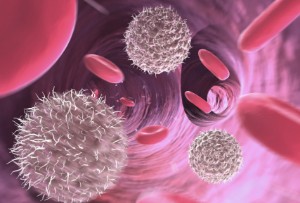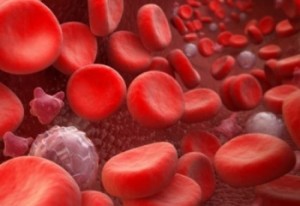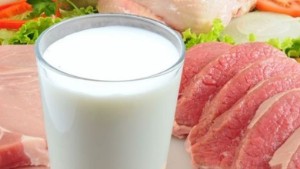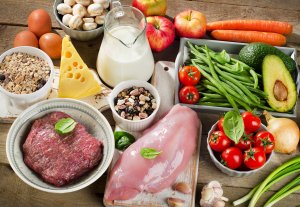Tips on how to lower fibrinogen in the blood and how dangerous it is to increase it beyond the norm
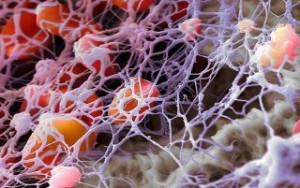 The general condition of the human body directly depends on the health of the cardiovascular and circulatory systems.
The general condition of the human body directly depends on the health of the cardiovascular and circulatory systems.
Among the significant factors, it is important to highlight the normal functioning of the organs and tissues that make up the circulatory system and the ability of blood to perform its functions:
- Deliver dissolved oxygen to cells through the action of hemoglobin;
- To carry out a protective function with the help of leukocytes;
- Cause blood clotting through platelets and fibrinogens.
Fibrinogen is produced in the liver, it plays a crucial role in the formation of blood clots. Fibrinogen levels, along with platelet count , shows blood density, determines the risk of thrombosis.
According to research , a person's daily diet has a significant effect on the level of fibrinogen and platelets in the blood. In this article, we will discuss the rules of the diet and specific foods that will help reduce fibrinogen.
Content
What are the dangers of deviations from the norm?
The amount of fibrinogen is adjusted in different life periods. Its level is influenced by many factors, including:
- Heredity and genetic predisposition;
- Diseases;
- Nutrition;
- Lifestyle in general.
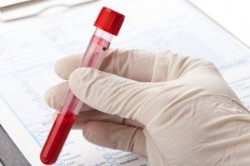 Excessive increase in fibrinogen levels is fraught, first of all, with thrombosis in blood vessels. Sharp increases can provoke:
Excessive increase in fibrinogen levels is fraught, first of all, with thrombosis in blood vessels. Sharp increases can provoke:
- Inflammation resulting from viral or infectious processes;
- Certain diseases that provoke high levels of fibrinogen;
- Tissue death.
At the same time, lower values are also dangerous. A decrease in fibrinogen contributes to the loss of the body's ability to clot blood to stop bleeding, which can have an extremely adverse effect on open wounds, scratches, cuts, childbirth and menstruation.
Among the causes of low fibrinogen, the following can be distinguished:
- Toxicosis (during pregnancy, also gestosis);
- Lack of vitamins C and B;
- DIC syndrome.
The problem of elevated or decreased fibrinogen levels must be addressed through an integrated, systematic and comprehensive approach.
It is important to take into account all the features of the body, age, body weight, gender, the state of sexual development, the general condition of the body and potentially possible problems, etc. To do this, it is necessary to visit a therapist, discuss the current situation with him and try to jointly find the most effective and acceptable solution.
However, this does not mean that the problem can be solved solely by taking pharmaceutical drugs. Taking medications must be supported by proper systematic nutrition and a healthy lifestyle.
It is also important to give up bad habits and take into account the fullest possible number of factors that can directly or specifically affect the body, including fibrinogen.
Why should he be monitored during pregnancy?
The importance of acceptable fibrinogen levels during pregnancy deserves special mention. In particular, the lack of fibrinogens as a result will adversely affect the body's ability to stop bleeding. During childbirth, this can lead to dangerously high levels of blood loss.
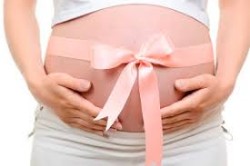 For pregnant women, the norm of fibrinogen content in the blood is:
For pregnant women, the norm of fibrinogen content in the blood is:
- First trimester – 2.3 – 5 (grams /liter);
- Second trimester – 2,4 – 5,1 (grams/liter);
- Third trimester – 3.6 – 6.2 (grams/liter).
Even if the correct level is observed throughout pregnancy, it is important to monitor it until delivery, since its level may be affected by gestosis, a form of toxicosis that can potentially manifest itself in the last stages of pregnancy.
20 products to reduce it
A diet that reduces the concentration of fibrinogen at its elevated level should contain the following products:

- Sea fish – the beneficial effect of consuming sea fish is due to the content of a large amount of unsaturated fats in its composition, contributing to improving blood composition ;
- Olive oil;
- Beetroot – because this product not only dilutes the blood , but also prevents a wide range of cardiovascular diseases;
- Raspberries – blood thinning is one of the most important abilities of raspberries;
- Green tea – weak green tea has a beneficial effect on blood viscosity ;
- Onion – willow bark and a variety of herbs also have an effect similar to the mechanism of action of onions;
- Cranberries – have a very beneficial effect on the composition of the blood as a whole;
- Cherries, red and black currants – beneficial effects on the blood are achieved through coumarin;
- Dry red wine – it is especially recommended to drink during a feast, where fatty and fried food is present on the table;
- Ginger – helps to thin the blood and a decrease in fibrinogen levels;
- Turmeric;
- Liver;
- Sprouted wheat;
- Avocado;
- Kiwi;
- Almonds;
- Lemon;
- Black coffee;
- Garlic;
- Seafood.
When planning a diet, it is important to pay attention to the following nuances:
- Ensure daily meals at the same time (diet);
- Pay attention to the distribution of intake of carbohydrates, proteins and fats throughout the day;
- Take into account individual characteristics, primary needs and intolerances of the body;
- It is necessary to consume the maximum products that help strengthen the cardiovascular system and the whole body as a whole;
- Add products that reduce the amount of fibrinogen.
For Blood thinners and reducing fibrin, it is important to drink and have enough clean water. In general, experts recommend consuming water in a volume of 1 to 2-2.5 liters per day, depending on the individual characteristics of the body. When calculating the recommended consumption volumes, the following are taken into account:
- Body weight and proportion of muscle mass;
- The presence of certain diseases;
- The body's ability to remove and assimilate nutrients dissolved in water (kidney, liver, etc.).
Folk remedies for lowering it
To support efforts to normalization of blood composition in some cases, it is advisable to use proven folk methods. Among them, attention should be paid to the following:

- Let's take nattogenases is an enzyme extracted from boiled fermented beans. The essence of taking nattogenase is to achieve the maximum coagulation values at which nattogenase will begin to cleave fibrin formed from fibrinogen. It should be taken on an empty stomach, up to 300 mg daily.
- Kombucci Reception - natural fermented tea obtained with the use of "tea mushroom". It should be taken carefully, and also abandoned a week before menstruation or a few weeks before the planned operation. Potential side effects include headaches, rashes, diarrhea, nausea, and abdominal pain.
- Other recipes based on decoctions and infusions of herbs, willow bark and birch - the number of recipes is huge, nevertheless, it is recommended to use them with great caution, after consulting with a specialist.
- Taking raw onions and garlic on an empty stomach.
In addition, it is very important to ensure sufficient magnesium content, which helps to saturate the blood with oxygen.
Among the vitamins that you should pay attention to and, with the consent of the doctor, take as an additional food, you can select:
- E;
- B (especially B12);
- C.
And what raises its level?
Among the products whose consumption leads to a rapid increase in fibrinogen, it is important to specify the following:

- Porridge (especially buckwheat);
- Chicken and quail eggs;
- Pomegranate juice;
- Pineapple;
- Banana;
- Cream;
- Potatoes;
- Spinach;
- Nettle;
- Kenza (coriander);
- Rich meat soups, jellies, jellies, aspic;
- Cabbage and lettuce.
Other important recommendations
Normalization of fibrinogen levels can be achieved by following the above tips and recommendations. At the same time, to maintain its acceptable level, to achieve the content of all substances in the blood at the proper level, to ensure Heart and vascular health and the whole body can only be achieved by applying an integrated approach that includes, in addition to proper nutrition, the following components:

- Sports - in addition to restorative effects, some sports especially stimulate getting rid of anticoagulants (aerobics, water sports);
- Environmental situation - the quality of the inhaled air inevitably affects the state of the body;
- Giving up bad habits - alcohol in small doses (dry red wine, cognac) can improve the overall picture of the blood, but excessive consumption significantly worsens the situation, tobacco smoking affects even worse;
- Clean water consumption - the feeling of thirst, manifested in the dryness of the oral mucosa, already indicates a significant degree of dehydration. Insufficient water intake can inevitably increase the risk of thrombosis, while daily intake of 1-2 liters of water helps to thin the blood.
Thus, in order to normalize the fibrinogen content, it is necessary:
- Establish the root cause of the condition (if the root cause is the presence of a disease, then, first of all, it is necessary to deal with it);
- Adjust nutrition, intake of additional nutrients;
- Exclude from the diet foods whose consumption critically increases the level of fibrinogen content;
- Provide support for traditional medicine treatment (if possible and necessary);
- Support treatment by giving up bad habits, exercising, breathing.
It is important to consolidate the result. In some cases, the level of various substances in the blood must be monitored especially carefully (for example, during pregnancy or planning, in a situation of chronic diseases, etc.), in others there is no need for strict constant monitoring.
Nevertheless, it is necessary to come to a doctor's appointment and take tests regularly. Prevention is not only cheaper, but also more often than treatment gives a positive result.
Interesting video
And now we invite you to familiarize yourself with the video:
Conclusion
It is important to remember that only an integrated and systematic approach is able to normalize the amount of fibrinogen and improve the overall blood composition. For this purpose, you can use a special diet, lifestyle changes, folk remedies, as well as vitamin and mineral complexes.
